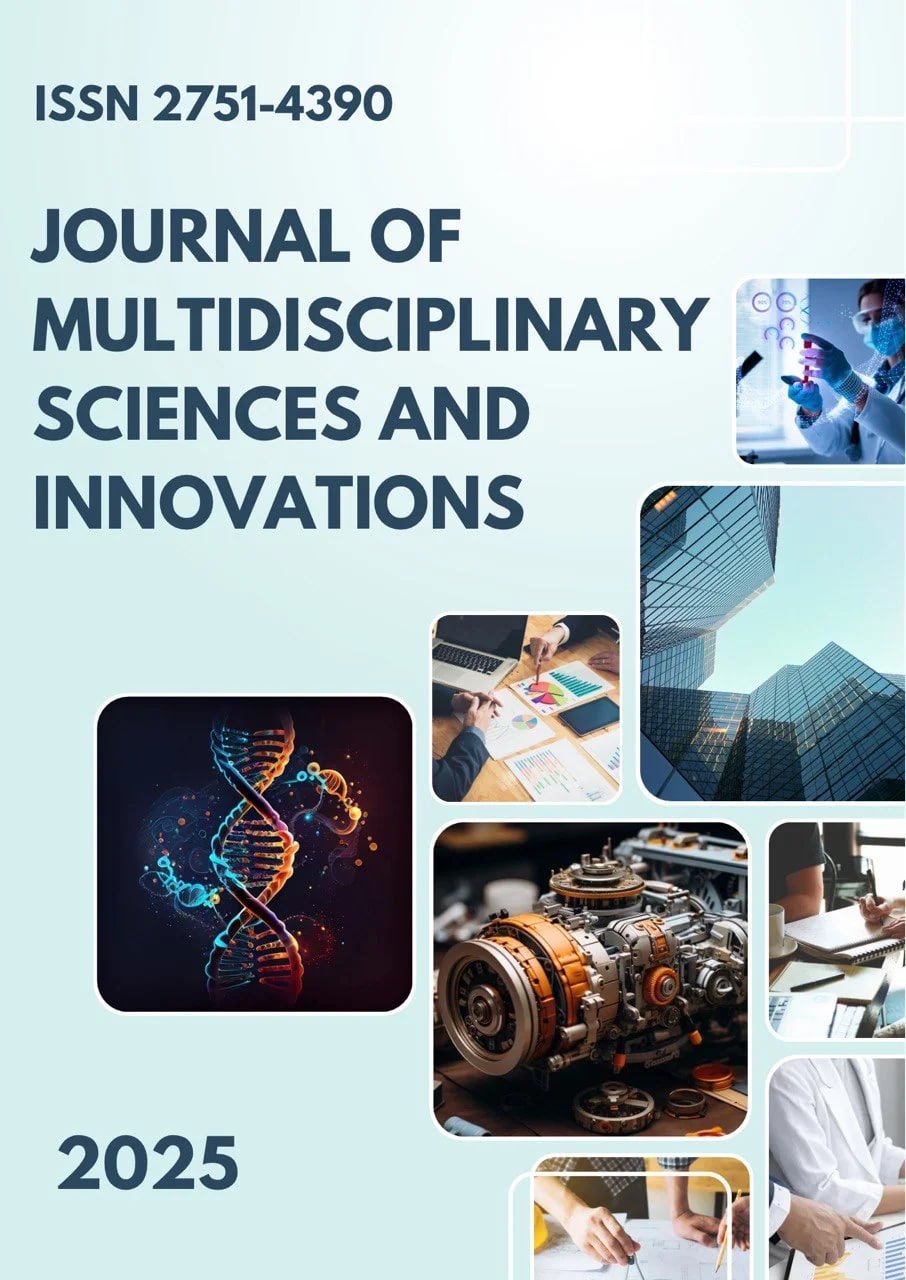CURRENT CHALLENGES IN THE DIAGNOSIS OF CHILDHOOD BRONCHIAL ASTHMA AT THE PRIMARY HEALTHCARE LEVEL AND STRATEGIES FOR IMPROVEMENT
Main Article Content
Abstract
Introduction: Bronchial asthma (BA) is a leading chronic respiratory disease in children, yet its diagnosis at the primary healthcare level is often delayed, leading to poorer outcomes. This study aimed to identify the key challenges in the timely diagnosis of childhood BA in the primary care setting and to propose effective strategies for improvement. Methods: A mixed-methods study was conducted involving 305 children in Andijan region, Uzbekistan. The study included a main group of 125 children (mean age 7 years) diagnosed with BA, a control group of 125 clinically healthy children (mean age 7 years) with a history of early-life wheezing, and a working group of 55 young children (mean age 3 years) with bronchial obstruction syndrome. Data were collected through retrospective analysis of medical records, prospective clinical-anamnestic evaluation, immunological assays (serum IgE), functional diagnostics (spirometry), and allergological tests. Statistical analysis was performed using SPSS version 26. Results: The average delay in BA diagnosis was found to be 2.8 ± 1.2 years after the onset of initial symptoms. Key reasons for delayed diagnosis included misinterpretation of recurrent wheezing as "obstructive bronchitis" (68% of cases), limited use of objective diagnostic tools like spirometry in children under 6 (55%), and low awareness of predictive risk factors among primary care pediatricians (45%). Children with a delayed diagnosis demonstrated significantly lower FEV1 scores (p < 0.05) and higher total IgE levels (p < 0.01) compared to those diagnosed early. An implemented electronic diagnostic support tool, based on a predictive model of risk factors, showed a 40% improvement in diagnostic accuracy for the working group. Conclusion: Delayed diagnosis of childhood BA at the primary care level is a significant problem driven by clinical, functional, and educational barriers. Overcoming these challenges requires a multi-faceted approach, including targeted training for pediatricians, wider implementation of age-appropriate functional diagnostics, and the integration of predictive digital support tools into routine clinical practice.
Downloads
Article Details
Section

This work is licensed under a Creative Commons Attribution 4.0 International License.
Authors retain the copyright of their manuscripts, and all Open Access articles are disseminated under the terms of the Creative Commons Attribution License 4.0 (CC-BY), which licenses unrestricted use, distribution, and reproduction in any medium, provided that the original work is appropriately cited. The use of general descriptive names, trade names, trademarks, and so forth in this publication, even if not specifically identified, does not imply that these names are not protected by the relevant laws and regulations.
How to Cite
References
1.Balabolkin, I. I. (2018). Бронхиальная астма у детей [Bronchial asthma in children]. Meditsinskoye Informatsionnoye Agentstvo.
2.Geppe, N. A., & Ozolina, E. V. (2016). Проблемы диагностики бронхиальной астмы у детей [Problems of diagnosing bronchial asthma in children]. Pediatricheskaya Farmakologiya, 13(2), 162–168.
3.Global Asthma Network. (2020). The Global Asthma Report 2020. Auckland, New Zealand.
4.Kwong, C. G., & Bacharier, L. B. (2019). Phenotypes of wheezing and asthma in preschool children. Current Opinion in Allergy and Clinical Immunology, 19(2), 148–153.
5.Martinez, F. D. (2019). The origins of asthma and allergic diseases. The Journal of Allergy and Clinical Immunology: In Practice, 7(3), 799-805.
6.Mescheriakov, V. V., et al. (2012). Факторы риска и варианты течения бронхиальной астмы у детей [Risk factors and variants of the course of bronchial asthma in children]. Rossiyskiy Vestnik Perinatologii i Pediatrii, 57(4), 80-84.
7.Mescheriakov, V. V. (2016). Бронхиальная астма у детей: от факторов риска к оптимизации терапии [Bronchial asthma in children: From risk factors to therapy optimization]. Medpraktika-M.
8.Mizernitsky, Y. L. (2015). Диагностика бронхиальной астмы у детей раннего возраста: нерешенные проблемы и новые возможности [Diagnosis of bronchial asthma in young children: Unsolved problems and new opportunities]. Pulmonologiya, 25(3), 358–365.
9.Ovsiannikov, D. Y., et al. (2017). Трудности диагностики бронхиальной астмы у детей раннего возраста [Difficulties in diagnosing bronchial asthma in young children]. Pediatriya. Zhurnal im. G. N. Speranskogo, 96(2), 121-127.
10.Papadopoulos, N. G., Arakawa, H., Carlsen, K. H., Custovic, A., Gern, J., Lemanske, R., ... & Wahn, U. (2020). International consensus on (ICON) pediatric asthma. Allergy, 75(8), 1913-1931.
11.Pijnenburg, M. W., & Baraldi, E. (2015). Monitoring asthma in children. European Respiratory Journal, 45(4), 920-928.
12.Zaitseva, O. V. (2017). Рецидивирующие эпизоды бронхиальной обструкции у детей: вопросы дифференциальной диагностики [Recurrent episodes of bronchial obstruction in children: Issues of differential diagnosis]. Lechashchiy Vrach, (5), 23-28.

